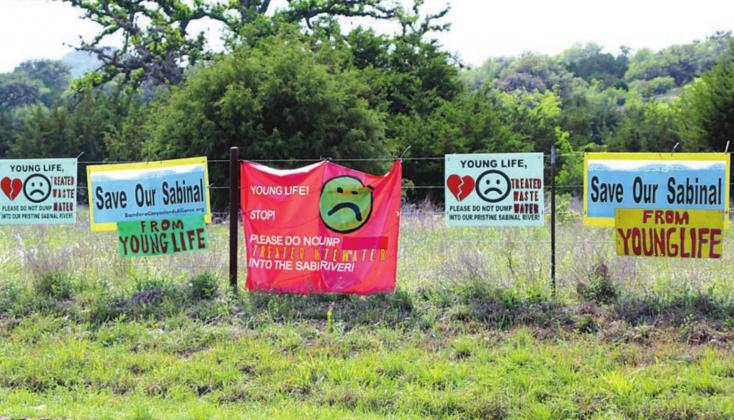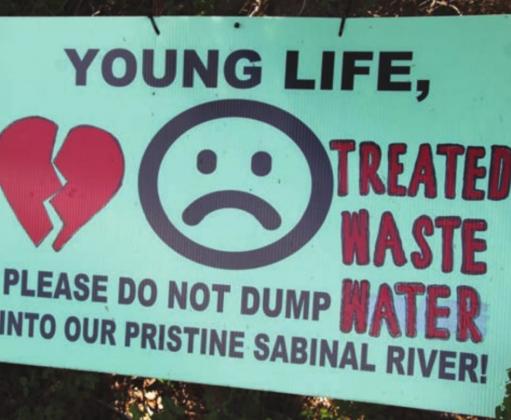Camp faces increasing backlash over wastewater discharge permit application
The Bandera County Commissioners Court voted unanimously last Thursday, May 13, in favor of a resolution opposing LoneHollow Ranch’s wastewater discharge permit application currently under review by the Texas Commission on Environmental Quality (TCEQ), echoing similar resolutions passed recently by the Uvalde and Real County Commissioners Courts.
If their permit application is approved, LoneHollow Ranch would be allowed to build a sewage treatment plant and legally release up to 60,000 gallons of treated wastewater per day into the Sabinal River. It would be the first such permit allowing discharge into the Upper Nueces River Basin, which includes the upper reaches of the Nueces, Frio and Sabinal Rivers.
Concerns regarding the Vanderpool camp’s permit application have also been raised by other organizations on, including Friends of Lost Maples, the Nueces River Authority, Keep Utopia Beautiful and the Bandera Canyonlands Alliance.
Furthermore, 23,000 people have signed a Change.org petition asking Young Life, the Colorado-based Christian organization that owns Lone-Hollow Ranch, to switch from a discharge permit to a zero-discharge plan.
Stacey Noll, Camp Manager at LoneHollow Ranch, said the camp cares deeply about the environment.
“We have made conservation a key pillar of our camp management plan,” she said. “Our water conservation plan centers on cleaning water to the highest standards, then using the treated water for irrigation around the camp.”
“The permit request currently under consideration by TCEQ would serve as a backstop, enabling us to manage excess water in the rare circumstances it cannot be used for irrigation, such as when rare heavy rain events saturate the ground to the point irrigation isn’t feasible,” said Noll.
According to a release from the Bandera Canyonlands Alliance, treated wastewater released into the river would cloud the water and trigger algae blooms, which have the potential to deplete oxygen in the water and make it toxic.
Merry Langlinais, Bandera Canyonlands Alliance President, emphasized the Upper Sabinal River is one of the last remaining Texas rivers untouched by wastewater discharge, and she fears approval of the TCEQ permit would result in similar permits allowing discharge into rivers and creeks in the region.
“The multi-million-dollar Young Life Corporation has the financial resources to accomplish what they need to do to expand their camp without asking for legal permission to discharge treated wastewater into tributaries of the Sabinal River,” Langlinais said in a press release. “They have other options that are proven and protective of these sensitive creeks and the river.”
“Since requesting this permit, we’ve had the opportunity to engage with others in the region, including the Cibolo Conservancy, who share our concern for the environment and our desire to conserve water in the drought-sensitive Hill Country,” said Noll. “We are grateful for their input so far, and continue to engage with them, the TCEQ and other stakeholders on the best path forward.”
Langlinais said over 500 people, most of them locals, have filled official comments with TCEQ opposing the permit application.
Concern regarding wastewater discharge is being addressed at the state level.
The Texas House approved House Bill 4146 earlier this month with of a vote of 82-61. The bill, now being considered in the Senate, would prevent new wastewater discharge permits into waters considered “pristine.”
The bill’s text defines “pristine” as water that has phosphorus levels blow 0306 milligrams per liter in 90 percent of all water quality samples taken in the past decade.


